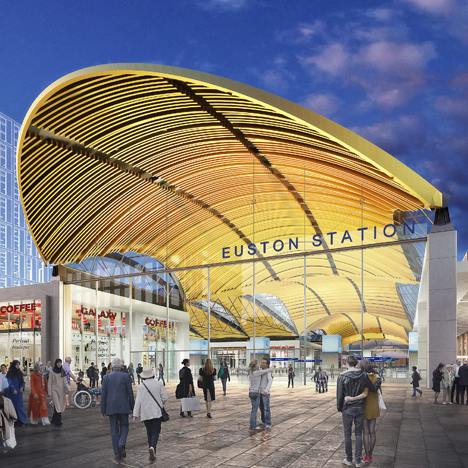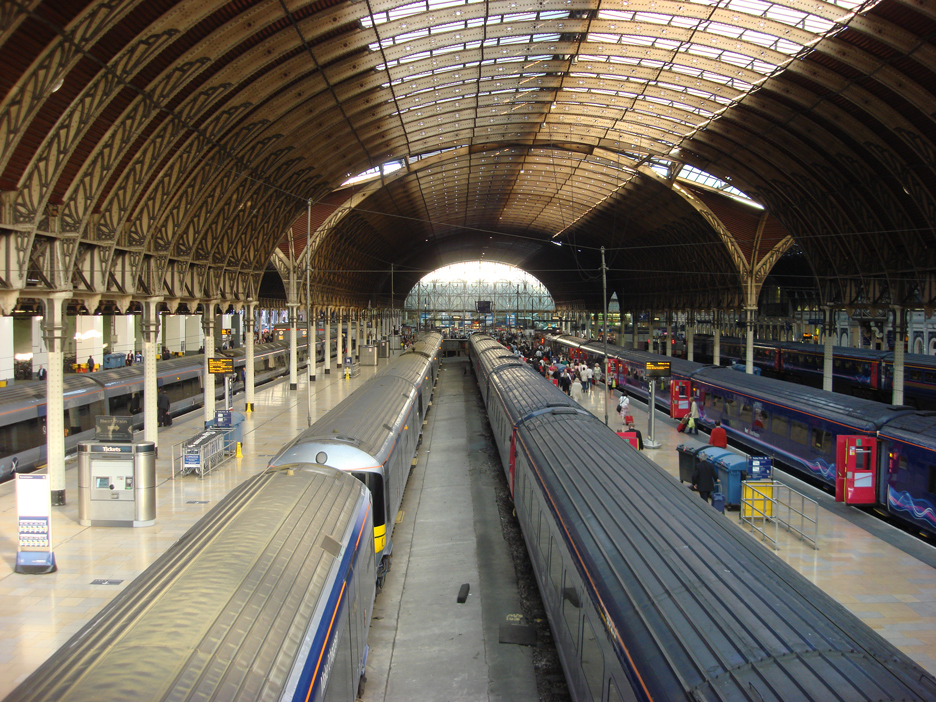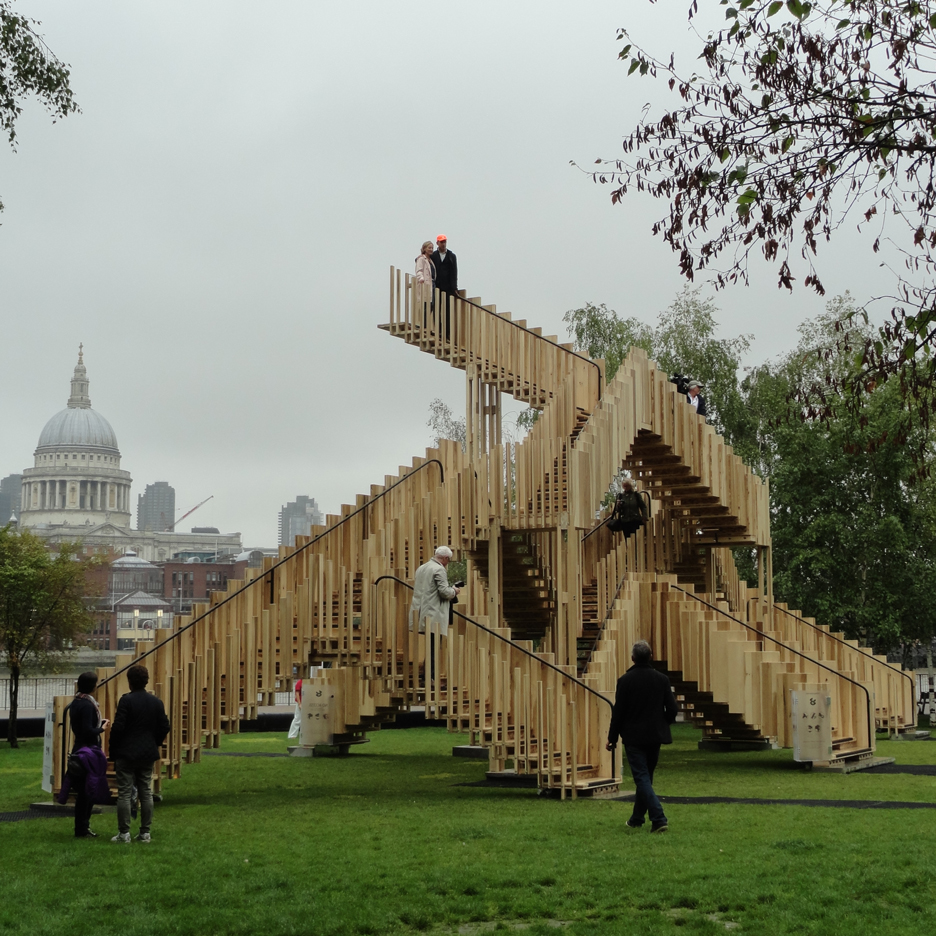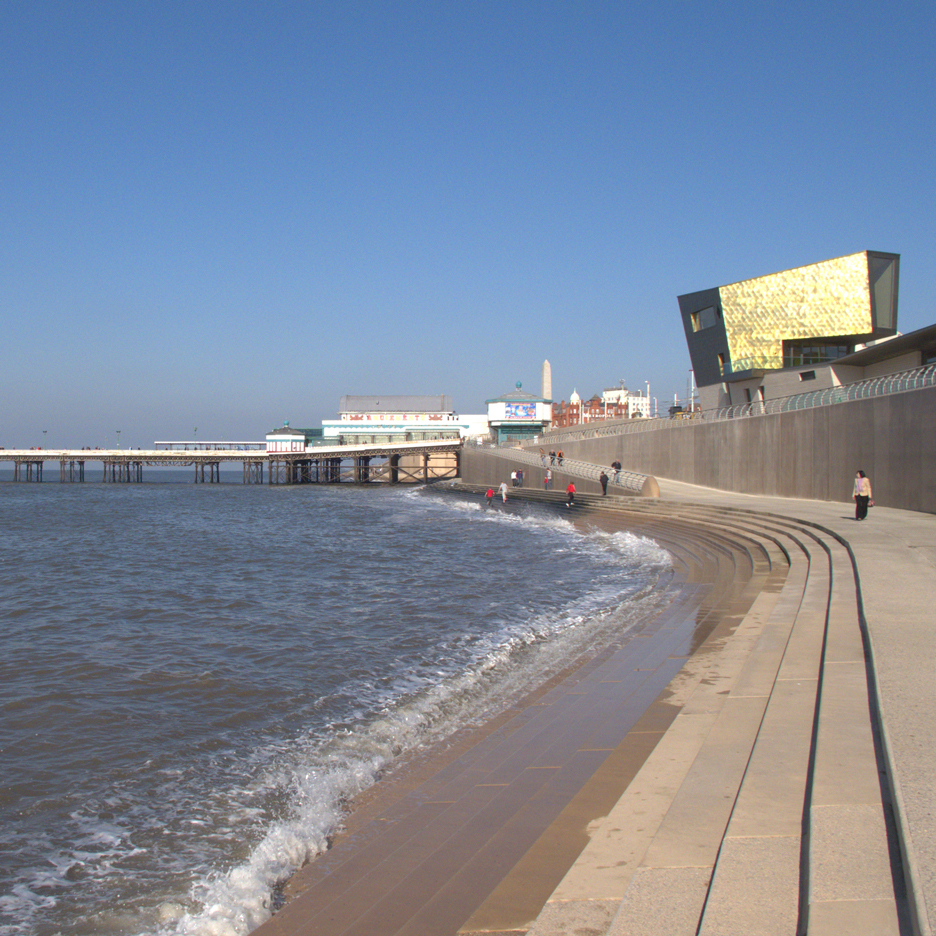UK government is starting to take design seriously, says Sadie Morgan
The British government is beginning to understand that design makes a difference in major infrastructure schemes, says architect Sadie Morgan, who is advising on £100 billion of investment in UK rail and energy projects (+ interview).
Morgan, co-founder of London architecture firm dRMM, effectively became one of the most powerful figures in British architecture last month when she was named as the only creative on the government's National Infrastructure Commission. The group will advise the government on £100 billion of investment over the next five years.
This quickly followed her appointment to chair the design panel for HS2, a high-speed rail link that is the UK's biggest infrastructure project.
"I would like to see it as a clear message that they're starting to take design seriously," she told Dezeen. "I definitely think the government is getting it."
"The focus on design within HS2 is really positive. The people involved believe deeply in their design vision," she said. "And I think government is beginning to recognise that actually it makes a difference."

Morgan, who recently stepped down as president of London's Architectural Association, has vowed to fight for design in both her new roles. She will be battling against a perception that good design makes infrastructure projects more expensive.
"In fact it can save money," she said. "There are many ways of designing a safe, secure, cost-effective piece of infrastructure that is beautiful."
Her first move has been to help HS2 appoint its 45-strong design panel. Announced last week, the panel includes Dutch architect Nathalie de Vries of MVRDV, engineer Hanif Kara and Tate galleries director Nicholas Serota.
David Kester, the former chief executive of the UK's Design Council who helped compile HS2's official "design vision" is also on the panel. Other members include Carol Patterson, UK director for Rem Koolhaas' firm OMA, UK architect Glenn Howells, and Luke Pearson, co-founder of industrial design firm PearsonLloyd.
The panel will advise on all elements of the 300-mile-long railway project, including landscaping, signage, train design, ticketing, viaducts, and stations.
However Morgan said that people who expected the project to deliver a series of iconic stations would be disappointed.
"We're not here to focus on the aspects that perhaps the design press or those who'll be wanting to champion the project will be focusing on," said Morgan. "If the success of the project is down to the stations, that's all wrong."

Morgan wants to try and help the UK rebuild its reputation as a country known for ambitious public architecture. Many of Britain's high-profile public structures were built more than 100 years ago – including most of its famous bridges, railways and stations.
"When they're launching these types of projects they always look back to the past, to the industrial revolution, to Brunel," said Morgan. "We had then, I think, a real vision – a vision for something that not only used the materials and the skills of the day, but also anticipated what might happen in the future."
"In the intervening period it's been much more inward looking, much more navel gazing, much more about trying to deal with very real and complex issues," she added.
"There's a whole set of different criteria now that I think perhaps have not given us the freedom of great imagination that [these projects] should have."

Morgan, 46, founded dRMM with architects Alex de Rijke and Philip Marsh after graduating from the Royal College of Art. She will continue to help lead the firm, which has been pioneering the use of new timber construction methods in the UK, as well as delivering more standard fare with projects including houses, artist's studios, schools, and cultural buildings.
"I left college and started dRMM," she said. "I've never worked for anyone else in that sense but myself, but I don't think that's always a healthy way to operate. So I've tried to pursue other things."
"These sorts of things bring another kind of energy back into the practice. If you're energised and you're enthusiastic as a person you just give it off, don't you? And if you're sort of bored and tired and cynical, then no one wants to work with you," said Morgan.
"People who are busy and interested and inspired get a lot done. So that's what I'm aiming to be."

Read an edited transcript from our interview with Sadie Morgan:
Anna Winston: You're on two key bodies that are looking after important, expensive infrastructure for the UK. Why is a designer on those panels?
Sadie Morgan: To start with firstly HS2. My role there is very much focused on design. The government wanted me to put together a group of experts from all walks of the design community, who would be able to assess and critique the work of HS2 in relation to their published design vision. We're there to be a critical friend, make sure they have the support and encouragement and inspiration that they need to actually deliver a project with the aspirations they have for design, which are pretty high.
The reason I've been asked to sit on the panel for the National Infrastructure Commission is probably a little bit more about bringing some lateral thinking to a group who are predominantly economists and experts in transformational projects, yes, but not necessarily really future thinking.
This is a commission that's wanting to not only deal with a few issues right here, right now, in terms of the TransPennine link, the potential of Crossrail Three and the strategy for energy production. But it's also looking to the future, so what might an integrated infrastructure system look like in five, 10, 15, 20 years time?
What I would like to be able to add would be an opportunity to make sure that places and people are thought about. Where these infrastructure projects land, how they land, and how you design projects that work integrally with the places and the communities that they'll ultimately serve.
But also, and more importantly for me, to be able to gather together big ideas in a way that really is future thinking, and perhaps a little bit more lateral thinking than would necessarily happen in a room without a creative.
Anna Winston: There have been a lot of people complaining that design has fallen off the table when it comes to procuring big projects in the UK. It's almost become a cliché: "we used to be really good at commissioning infrastructure, look at the Brunel stations". What went wrong?
Sadie Morgan: Everybody does it when they're launching these types of projects. They always look back to the past, to the industrial revolution, to Brunel. We had then, I think, a real vision – a vision for something that not only used the materials and the skills of the day, but also anticipated what might happen in the future.
In the intervening period it's been much more inward looking, much more navel gazing, much more about trying to deal with very real and complex issues of safety and cost and making sure we're not overusing the world's resources. There's a whole set of different criteria now that I think perhaps have not given us the freedom of great imagination that [these projects] should have.
Anna Winston: What are you hoping to be able to help government or infrastructure providers do to get that vision back?
Sadie Morgan: It really is by leading by example and just trying to communicate that design doesn't cost any extra. In fact it can save money. What it can offer is a project that, it sounds corny, but just exceeds expectations. And so it should. It should deliver on every level. It should be well-enough designed for everybody to be able to use it regardless of their abilities, but also lift our spirits and fit within its context.
It should do all the things that we want projects to do without the excuse of "oh it costs too much to do that" or "we haven't got the time to do that" or "X needs to fulfil this type of safety criteria so it has to look like that". It doesn't. There are many ways of designing a safe, secure, cost-effective piece of infrastructure that is beautiful.
Anna Winston: I suppose it's positive that there is at least a designer on the Infrastructure Commission.
Sadie Morgan: I think it's super positive. And the focus on design within HS2 is really positive. The people involved believe deeply in their design vision. It's about helping them to achieve that.
And I think government is beginning to recognise, particularly with the high-profile success of well-designed schemes – be they residential or bridges, in the UK or abroad – that actually it makes a difference.
Anna Winston: So the government is actually starting to get it?
Sadie Morgan: I definitely think the government is getting it. I don't think I'd be on the panel otherwise. I would like to see it as a clear message that they're starting to take design seriously.
Anna Winston: I noticed you didn't want to be involved in the gender discussions at the World Architecture Festival. Do you think it's gone beyond that?
Sadie Morgan: Absolutely. This is about being a creative. This is about, I hope, bringing a lateral vision – a vision that is not only strategic but is able to touch upon the detail. The fact that I am a woman, I hope, hasn't played a part in that. I don't believe it has. The skills that I bring are independent of that. They're the skills that anybody in my position would hopefully bring.
Anna Winston: There's been some outcry at the suggestion of using standardised designs on HS2.
Sadie Morgan: If you're looking at progressive ideas about how you put a railway together, it's unlikely you're going to get 300 miles of individual bits of rail. Of course there's going to be an element of standardisation in a project of that scale, it's madness to think that there isn't. Standardisation doesn't have to be a dirty word. Standardisation is a modern answer for fast, efficient, high-quality design elements. I don't think it's something to get hung up on.
The scale of it is mind-blowing. You can never understand the enormity of it until you see the amount of drawings it requires. There are plenty of people who can tell you how many Wembley Stadiums the drawings would fill.
We're not here to focus on the aspects that perhaps the design press or those who'll be wanting to champion the project will be focusing on. If the success of the project is down to the stations, that's all wrong. The success of this project is everything from customer experience to the quality of the landscaping to the train.
Anna Winston: It sounds like there's a lot of pressure, especially given that some of the coverage of HS2 thus far has been quite negative.
Sadie Morgan: I don't feel the pressure in that respect. For me it's not about the politics. Regardless of whether or not you think this railway is a good thing, if it's going to happen then as a design community we have to engage in it and we have to do our absolute upmost to ensure it's as good as it can be.
You can sit on the sidelines and say "oh no I don't think it's a great idea", but that's not the kind of person I am. It's a very ambitious project, it's all about engineering, it's all about creativity and innovation, and they're things that as a nation we're incredibly good at.
It will be hugely impactful in very positive ways on the UK. Not only its economy, but the way it perceives itself. If we say "look everybody get involved" and everybody gets on board, there's no way it can be a failure, you know, it just can't be. It should be a source of huge and great national pride.
Anna Winston: The HS2 project covers a huge time span...
Sadie Morgan: God yes. I mean 2025, oh my god we'll be picking up our pensions! And that's part of its ambition and part of its romance. We're building something for future generations, the future of this country, and in that sense it has to be foolproof. It has to be future-proof and that's a massive challenge. What's more exciting than that?
Anna Winston: Is it possible to compare these huge projects to anything you've worked on before?
Sadie Morgan: Well, I've always had outside interests. They give me a kind of perspective on the world.
I've only ever run my own business. I left college and started dRMM. I've never worked for anyone else in that sense but myself, but I don't think that's always a healthy way to operate. So I've tried to pursue other things. The skills that you pick up can only, I think, help make you a more rounded person and also bring a different set of skills into your practice work.
I've certainly got the energy for it. I've got plenty of that! My kids are 18 and 16. I've kind of gone through a certain part of my life, I'm out the other end. I've got a lot more wisdom, energy, experience and it feels crazy not to do something with that.
DRMM is in good spirits and also, funnily enough, these sorts of things bring another kind of energy back into the practice. If you're energised and you're enthusiastic as a person you just give it off, don't you? And if you're sort of bored and tired and cynical, then no one wants to work with you. People who are busy and interested and inspired get a lot done. So that's what I'm aiming to be.